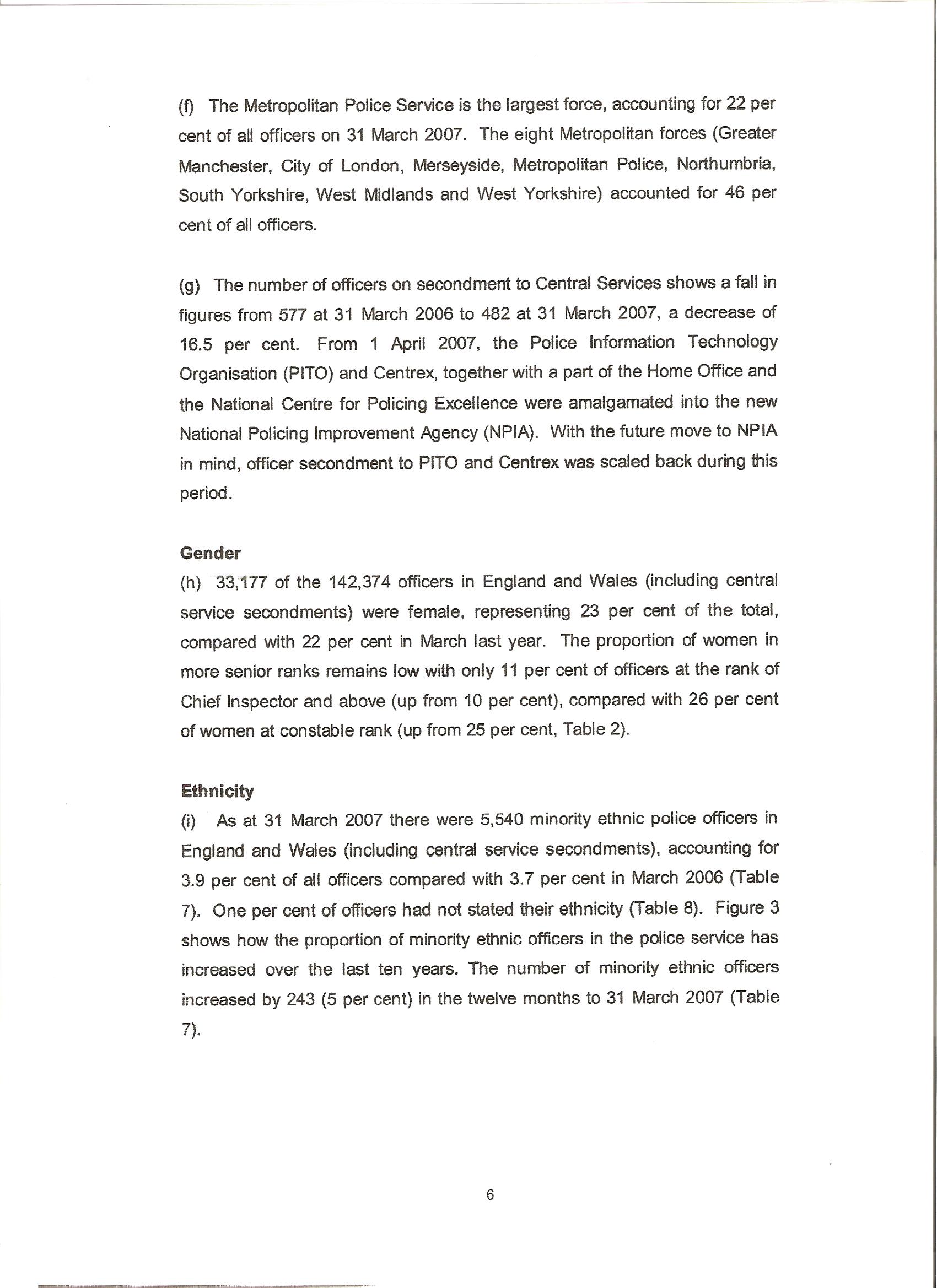38859 Image (52)

(f) The Metropolitan Police Service is the largest force, accounting for 22 per cent of all officers on 31 March 2007. The eight Metropolitan forces (Greater Manchester, City of London, Merseyside, Metropolitan Police, Northumbria, South Yorkshire, West Midlands and West Yorkshire) accounted for 46 per cent of all officers.
(g) The number of officers on secondment to Central Services shows a fali in figures from 577 at 31 March 2006 to 482 at 31 March 2007, a decrease of 16.5 per cent. From 1 April 2007, the Police Information Technology Organisation (PITO) and Centrex, together with a part of the Home Office and the National Centre for Policing Exceilence were amalgamated into the new National Policing lmprovement Agency (NPIA). With the futurę move to NPIA in mind, officer secondment to PITO and Centrex was scaled back during this period.
Gender
(h) 33,177 of the 142,374 officers in England and Wales (including central service secondments) were female, representing 23 per cent of the total, compared with 22 per cent in March last year. The proportion of women in morę senior ranks remains Iow with only 11 per cent of officers at the rank of Chief Inspector and above (up from 10 per cent), compared with 26 per cent of women at constable rank (up from 25 per cent, Table 2).
Ethnicity
(i) As at 31 March 2007 there were 5,540 minority ethnic police officers in England and Wales (including central service secondments), accounting for 3.9 per cent of all officers compared with 3.7 per cent in March 2006 (Table 7). One per cent of officers had not stated their ethnicity (Table 8). Figurę 3 shows how the proportion of minority ethnic officers in the police service has increased over the last ten years. The number of minority ethnic officers increased by 243 (5 per cent) in the twelve months to 31 March 2007 (Table 7).
6
Wyszukiwarka
Podobne podstrony:
P1130049 1.3.4 Uterine pathology 1.3.4.1 Embryonic death In the horse embryonic death occurs in 4 to
CSG188 177 The Commands changes follows. For morę detailed study of verbs with spelling changes, rev
per cent of the hijras living in India today have undergone genital surgery - according to the 1990
CSG188 177 The Commands changes follows. For morę detailed study of verbs with spelling changes, rev
73emissions12 Howto Maintain the Emission Control System For best overall performance of your Volksw
304 Karolina Górnik The rangę of private banking services is wide and typically consistent with the
Image (11) Table A: Police service strength as at 31 March 2007, England and Wales Rank Ali Staff
29 (466) 52 The Viking Age in Denmark We have already mentioned the expansion of grasses, and it is
7 services. The 1992 Survey shows that perceived ąuality of services is one of the most important de
This service is based on data and products of the European Centre for Medium-range Weather Forecasts
This service is based on data and products of the European Centre for Medium-range Weather Forecasts
This service is based on data and products of the European Centre for Medium-range Weather Forecasts
This service is based on data and products of the Eu ropean Centre for Mediu m-range Weather Forecas
więcej podobnych podstron